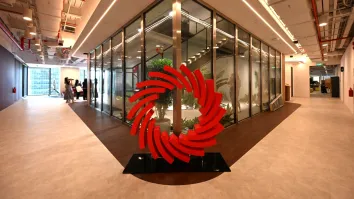
APAC to lead microinsurance market – report
Globally, the segment’s CAGR is forecast to rise 6.2% by 2031.
Asia Pacific (APAC)leads the microinsurance market, driven by its large population and untapped market potential, according to a Research and Markets report.
The report titled “Global Microinsurance Market 2023-2031: Set for a More Inclusive and Economically Resilient Future” the global microinsurance sector is poised for substantial growth, with an expected Compound Annual Growth Rate (CAGR) of 6.2% from 2023 to 2031.
This surge is driven by rising demand for accessible and affordable insurance solutions tailored to low-income individuals and underserved populations. As the global financial landscape transforms, microinsurance emerges as a crucial tool for bridging gaps and ensuring financial inclusion.
With rising adoption of microinsurance products and growing financial awareness, APAC leads the charge toward financial inclusion. Meanwhile, Africa emerges as a growth leader, marked by innovative distribution channels, supportive regulations, and aid organisations' efforts.
Government support and regulatory environments are crucial in propelling the microinsurance market. Favorable policies and regulations create an environment conducive to insurers offering microinsurance products to underserved populations.
Government-backed microinsurance schemes, like India's Pradhan Mantri Suraksha Bima Yojana (PMSBY) and Pradhan Mantri Jeevan Jyoti Bima Yojana (PMJJBY), emphasise promoting financial protection for vulnerable segments. Additionally, tailored regulatory frameworks for microinsurance foster consumer protection, transparent product offerings, and a conducive market landscape.
The revenue of the microinsurance market consistently shows upward momentum, reflecting increased recognition and adoption of microinsurance products worldwide. Factors such as expanding microinsurance initiatives, strategic partnerships between insurers and microfinance institutions, and supportive government regulations play pivotal roles in influencing revenue.
Microinsurance covers a wide range of risks, catering to various segments like health, life, property, agriculture, and livestock. The microinsurance market is driven by the imperative to mitigate financial uncertainties faced by these groups and promote economic stability.
ALSO READ: Micro-insurance protection jumps 22.5% in the Philippines – Q1 2023
The pillars of access, awareness, and financial inclusion strongly drive the microinsurance market.
Collaborations between insurance providers and microfinance institutions (MFIs) play a vital role in driving the microinsurance market. This approach benefits both insurers, who gain access to an established client base, and MFIs, who expand their services to include critical insurance coverage.
Low financial literacy and lack of trust among low-income individuals pose significant obstacles. Limited understanding of insurance products and skepticism about their value often deter individuals from embracing microinsurance.
Health insurance dominates the microinsurance market, addressing healthcare needs of low-income individuals.
Competition in the microinsurance market is fierce and diverse, involving insurance companies, microfinance institutions, non-profits, and technology startups.
These players vie for prominence through innovative products, distribution strategies, and impactful partnerships. Noteworthy companies have recognised microinsurance's potential and harnessed resources to drive inclusion.



















 Advertise
Advertise








